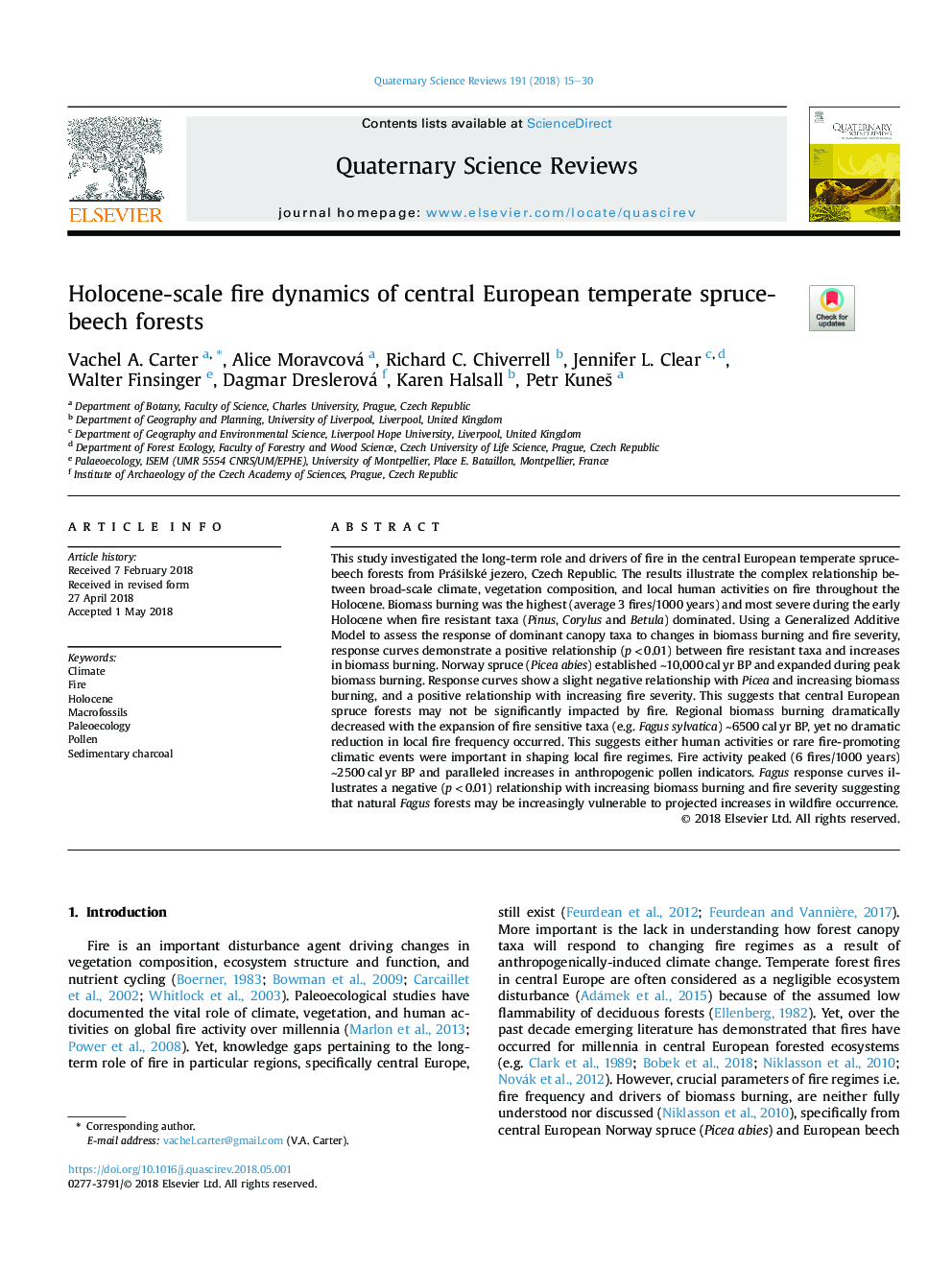| Article ID | Journal | Published Year | Pages | File Type |
|---|---|---|---|---|
| 8914742 | Quaternary Science Reviews | 2018 | 16 Pages |
Abstract
This study investigated the long-term role and drivers of fire in the central European temperate spruce-beech forests from PráÅ¡ilské jezero, Czech Republic. The results illustrate the complex relationship between broad-scale climate, vegetation composition, and local human activities on fire throughout the Holocene. Biomass burning was the highest (average 3 fires/1000 years) and most severe during the early Holocene when fire resistant taxa (Pinus, Corylus and Betula) dominated. Using a Generalized Additive Model to assess the response of dominant canopy taxa to changes in biomass burning and fire severity, response curves demonstrate a positive relationship (pâ¯<â¯0.01) between fire resistant taxa and increases in biomass burning. Norway spruce (Picea abies) established â¼10,000â¯calâ¯yr BP and expanded during peak biomass burning. Response curves show a slight negative relationship with Picea and increasing biomass burning, and a positive relationship with increasing fire severity. This suggests that central European spruce forests may not be significantly impacted by fire. Regional biomass burning dramatically decreased with the expansion of fire sensitive taxa (e.g. Fagus sylvatica) â¼6500â¯calâ¯yr BP, yet no dramatic reduction in local fire frequency occurred. This suggests either human activities or rare fire-promoting climatic events were important in shaping local fire regimes. Fire activity peaked (6 fires/1000 years) â¼2500â¯calâ¯yr BP and paralleled increases in anthropogenic pollen indicators. Fagus response curves illustrates a negative (pâ¯<â¯0.01) relationship with increasing biomass burning and fire severity suggesting that natural Fagus forests may be increasingly vulnerable to projected increases in wildfire occurrence.
Related Topics
Physical Sciences and Engineering
Earth and Planetary Sciences
Geology
Authors
Vachel A. Carter, Alice Moravcová, Richard C. Chiverrell, Jennifer L. Clear, Walter Finsinger, Dagmar Dreslerová, Karen Halsall, Petr KuneÅ¡,
